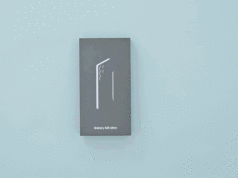The Galaxy S7 edge has been on the market for 9 months now (it was released in stores on March 11th), but it has become the standard with which all other so-called high-end Android flagships must compete. So, it’s natural that some Galaxy Note 7 users in particular are having to decide between the Galaxy S7 edge and the Google Pixel/Pixel XL. I own both the S7 edge and the Pixel XL and have had a good two months with the Pixel XL. At this point, though my time with the S7 edge has been 4 times as long, I’m ready to provide some answers for former Galaxy Note 7 customers wondering whether or not they should stick with Samsung or jump ship for Google.
I think that, in the absence of the Galaxy Note 7, the Galaxy S7 edge from Samsung is the next best thing, but the following seven reasons will include information I’ve gleaned from the Pixel XL.
Without further ado, here are seven reasons why I prefer the Galaxy S7 edge over the Google Pixel XL.
Design
The design is the first noticeable feature of these two handsets, but I find the Galaxy S7 edge design to be better than that of the Google Pixel XL. Google’s design makes sense, seeing that the search engine giant wanted to use glass for the back-mounted fingerprint sensor and metal for the bottom two-thirds of the back cover. And yet, Google could’ve solved the design problem by placing the fingerprint sensor at the bottom bezel portion of the display on the front of the phone. This way, the bezel would’ve served a purpose other than sitting there, and the back cover design wouldn’t appear conflicted.
In contrast, the Galaxy S7 edge just has a design where everything seems in place. The dual-edge display has been a change from the single-edge display design of the Galaxy Note Edge that now looks complete, unified, whole. Again, I understand why Google designed the back cover with one-third glass and two-thirds metal, but it still appears haphazard and whimsical with an absence of design focus.
Water resistance vs. Splash resistance
The Galaxy S7 and Galaxy S7 edge feature IP68 water and dust resistance, while the Pixel and Pixel XL feature only IP53 splash resistance (and some dust resistance, though not nearly enough). Google says it ran out of time to add full-blown IP68 water and dust resistance to the Pixels, and this, in addition to the glass-and-metal design of the back cover, indicates that the final product was rushed to market.
I shouldn’t have to question whether or not my smartphone can survive the elements, and, for 99% of the water situations I’ll encounter, the Galaxy S7 edge can more than hold its own. Splash resistance is more hypothetical than real when it comes to water amounts (what constitutes a splash or a jet stream of water, exactly?).
The S7 edge charges faster than the Pixel XL
The Galaxy S7 edge has a 3,600mAh battery, and the Pixel XL has a 3,450mAh battery, so you’d assume the Pixel XL would charge faster. Unfortunately, you’d be wrong to assume so.
In my own tests with wire charging for both phones (the Pixel XL utilizes USB Type-C charging while the S7 edge still holds on to micro-USB charging), the Pixel XL takes 128 minutes (2 hours, 8 minutes) to charge. The Galaxy S7 edge, in contrast, takes 100 minutes (1 hour, 40 minutes) to charge. The S7 edge, mind you, has 150mAh more battery but charges nearly 30 minutes faster, not a good sign for USB Type-C charging. Even the now-deceased Galaxy Note 7 took only 92 minutes (1 hour, 32 minutes) to charge with its 3,500mAh battery.
I expected the Pixel XL to charge faster than the Galaxy S7 edge, but I was surprised. And you will be too, should you purchase the Pixel XL. In charging, though, the numbers matter, and I’m giving the nod to the S7 edge.
Samsung pushes forward with wireless charging, Google retreats
The Galaxy S7 edge, as was the case with the Galaxy Note 5, has not only wireless charging but fast wireless charging that helps your device charge even faster when on the charging pad. Google once implemented wireless charging into its Nexus 5 and Nexus 6, for example, but decided against it for the LG Nexus 5X and Huawei Nexus 6P. This year’s Pixels lack wireless charging as well, a sign that Google seems more content with abandoning wireless charging than returning it to its smartphone lineup.
I understand that for many, USB Type-C charging is the trend of wire charging, but it’s possible to keep USB Type-C charging and implement wireless charging. One need not be compromised for the other, so Google’s resistance to wireless charging in its last few smartphones seems out of place. I want charging options for my daily driver, so I’m going with Samsung’s Galaxy S7 edge here. Oh, and, yeah, I’ll be sure to throw my old Nexus 5 on my Samsung wireless charging pad to charge it up from time to time.
Samsung’s design brings added functionality you won’t find elsewhere
Google’s glass-and-metal design has been done, according to Google, to add an excellent back-mounted fingerprint sensor. Samsung placed a home button on the Galaxy S7 edge that didn’t encounter that problem, but Samsung has also incorporated a dual-edge display for more than just design – but to bring new edge functions that didn’t exist on flat-paneled smartphones.
These edge panels and functions don’t merely imitate the features and functionality of other smartphones but bring a new dimension to a new design. The Netflix edge panel (called Edge Flix) puts you one tap away from your favorite movies and TV shows, no matter what you’re doing on your smartphone, and the tasks edge lets you send an email or record a voice memo. The SoftKey Edge brings the one-stop-button-shop Assistant Menu to the edge panel lineup.
This isn’t to say that the Pixel XL doesn’t bring some functionality of its own that has been rare on many high-end Android smartphones. The nice gestures with the fingerprint sensor utilize the sensor for more than just the smartphone unlock, but the “app shortcuts” feature is Google’s take on Apple’s 3D Touch – and the landscape desktop mode draws heavy inspiration from the feature Apple brought to its iPhone 6 Plus two years ago.
The win in functionality goes to the Galaxy S7 edge, since its edge panels and tasks aren’t heavily derived from the work of others. You won’t hear buyers of other OEMs say “I have the same on my phone” when you buy the S7 edge.
Battle of the cameras
As always, great smartphones have great cameras, and that holds true with both the Galaxy S7 edge and the Pixel XL. I’m aware that mobile photography expert DxOMark has given the edge to the Pixel XL between these two 12MP rear cameras, but the close race between them and the one-point win for the Pixels show that these smartphones provide the best cameras you’ll get in 2016.
With that said, though, in my in-depth testing and comparisons between both phones, I’ve found that the Pixel XL doesn’t have the yellow “tungsten” look of Samsung photos indoors, and the warm color tones they provide for human skin are commendable. The Pixel XL also has some really great camera performance outdoors and can capture scenes well at times.
And yet, the Pixel XL doesn’t have the consistent true-to-life colors of the Galaxy S7 edge. The Pixel XL takes great photos when it does, but it tends to wash out photos when it doesn’t. In contrast, Samsung’s cameras can be colder than the actual image or scene at times, but Samsung’s photos can never be said to “wash out” anything. I prefer that photos oversaturate at times than undersaturate, but I’m also opposed to warm tones in a scene that doesn’t support them.
The Pixels provide warmer tones than Samsung’s Galaxy S7 edge does at times, but the issue with the Pixels’ warmer tones is that they don’t match real life. The Galaxy S7 edge didn’t struggle with hot pinks, for instance, but the Pixel XL turned them to a “neon orange” color.
Greens on the S7 edge that look vibrant turn bluish with the Pixel XL at times, and even photos of reddish/pink roses turn into a light pink color on the Pixel XL. Gray gravel transforms into a “sunbaked brown” when taken with the sun in the background. Yellow dandelions look sunbaked as well, a sign that the Pixel XL “photoshops” and smooths over photos instead of trying to render an accurate assessment of the scene and/or object.
Samsung’s Galaxy S7 edge still holds its own well, despite the Pixel XL’s strength in indoor lighting at times and its photoshopping abilities. In the end, though, real life is appealing in its own way and, while having some photography touch-ups, doesn’t need the ultra-warm tones of the Pixel XL. The camera battle here goes to the S7 edge.
Samsung Pay vs. Android Pay
You knew it was coming. You can’t talk about Samsung’s and Google’s latest without talking about their mobile payment systems. Android Pay runs on NFC or Near Field Communication, mandating that stores have updated NFC terminals to operate.
Samsung Pay, in contrast, works whether or not your favorite local store can afford to upgrade and get NFC terminals or not. Samsung Pay runs on MST (magnetic secure transmission) and allows you to make mobile payments at traditional card readers. As you’ve likely heard it said, Samsung Pay works at about 90% of all stores. And, in my experience, that’s held true to this day.
Samsung has the winner with MST and Samsung Pay; after all, I shouldn’t be prevented from using state-of-the-art technology because the store I frequent isn’t as up-to-date. Samsung removes that barrier, which makes using the Galaxy S7 edge far more appealing. And yes, while I can still use the Gear S3 Frontier and my Pixel XL for Samsung Pay, Samsung Pay is one aspect of a great smartphone. I don’t want part of the Samsung experience but all of it, though your view on this…






